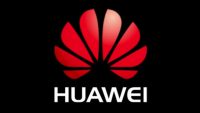Commerce Department Tech Ban Checks Huawei’s 5G Plans
June 23, 2020
When the U.S. Commerce Department banned chipmakers that use U.S. technology from supplying their products to Huawei, it crippled the Chinese company’s ability to build out 5G networks. Specifically, all semiconductor manufacturers use U.S. technology to build components integrated into 5G base stations. Research firm EJL Wireless Research did a teardown of a 2019 Huawei base station and determined the ban will impact “dozens of critical components.” Huawei said its 5G launches and operations will be disrupted by the ban.
The Wall Street Journal reports that, according to EJL’s breakdown, Huawei is attempting to develop its own parts, such as “radio-interface chips … [that] were likely developed by Huawei to substitute for a similar line made by U.S. vendors Xilinx and Intel … [as well as] Huawei-designed chips that transform analog signals into digital signals and back, which replaced chips from American companies such as Texas Instruments and Analog Devices.”

WSJ notes that, “the U.S. rule hurts Huawei because while the Chinese company can design world-class chips, it doesn’t have the capability to build them.”
Under Secretary of State Keith Krach stated that, “we’ve utilized the strengths of semiconductor-equipment companies [also known as “foundries”] and electronic-design software companies to eliminate Huawei’s access to the necessary, sophisticated chips to build 5G systems and their most sophisticated smartphones.”
EJL president Earl Lum said, “those things, I don’t think, could be made in a foundry in China right now … which means, you don’t have a 5G base station.” Taiwan Semiconductor Manufacturing Company reported it is “working with outside counsel to analyze the new rule.” New Street Research analyst Pierre Ferragu surmised that Huawei “has less than 12 months in stockpile of its most advanced telecom-equipment chips covered by the new rule.”
EJL’s teardown included the base station’s active antenna unit — “a 90-pound white box that is typically mounted atop a cellular tower and communicates with a user’s smartphone — that “made heavy use of U.S. components,” most likely stockpiled. EJL “relied on industry contacts and an analysis of the telecom-supply chain,” for its teardown — “and it is possible that the actual contents of Huawei’s recently built base stations are different.”
Although Huawei has “made enormous leaps in the design of its chips in recent years,” it doesn’t have the “highly specialized tools” to create 5-nanometer versions.
Although Taiwan Semiconductor Manufacturing is one of the few “capable of such a feat … one alternative manufacturer for some Huawei-designed chips is Shanghai-based Semiconductor Manufacturing International,” which just got a $2.2 billion infusion of cash from the state. But “analysts say the company is years behind its Taiwanese rival in terms of manufacturing prowess and still reliant on U.S. technology … [and] Goldman Sachs predicts [its] … revenue from Huawei to fall to zero by the fourth quarter from 19 percent currently.”
Related:
China Tech Firms Face Backlash Over Beijing’s Policies, The Wall Street Journal, 6/22/20

No Comments Yet
You can be the first to comment!
Sorry, comments for this entry are closed at this time.